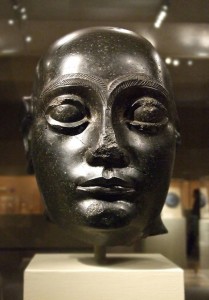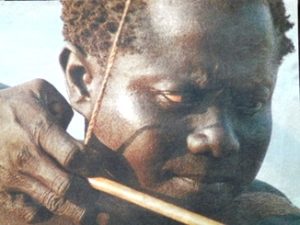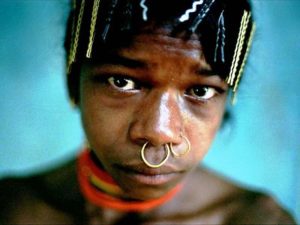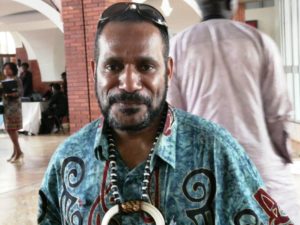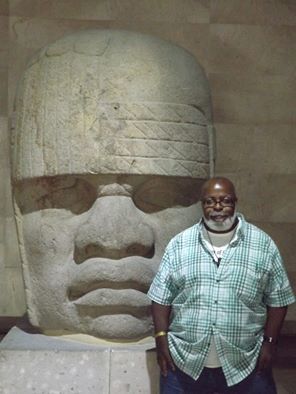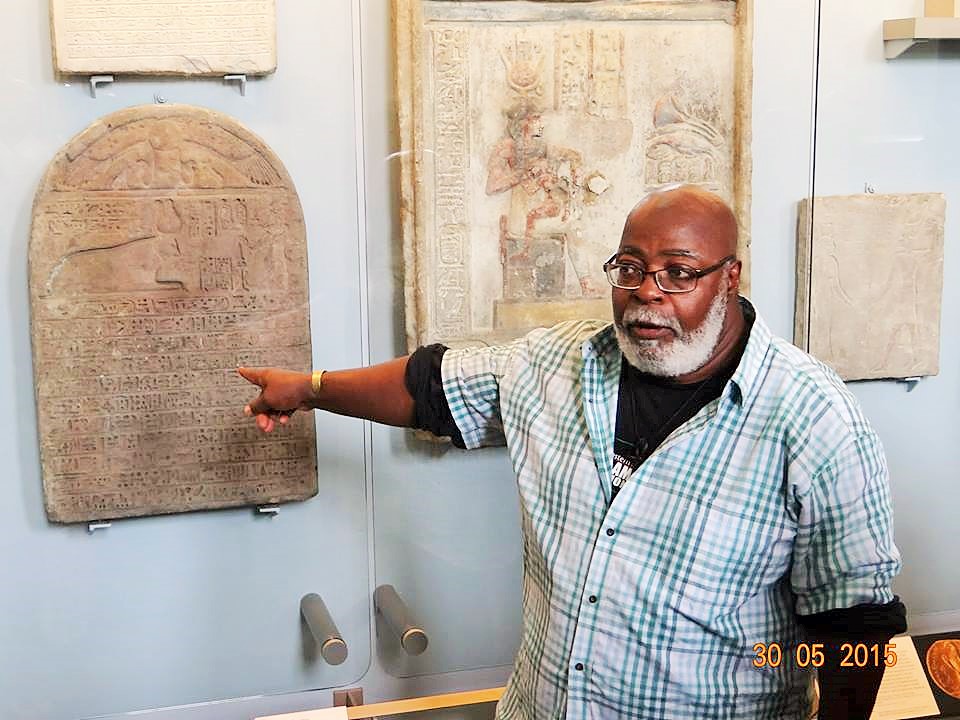Article: Before Enslavement: Africa’s Ancient Diaspora
September 14, 2014 | Posted by Runoko Rashidi | Originally posted on AtlantaBlackStar.com.
BY RUNOKO RASHIDI*
INTRODUCTION
I have argued for many years now that the worst crime that we can commit is to teach our children that our history began with slavery. And yet, this is what many of us do in the Black communities of the Western Hemisphere. When Black History Month rolls around, we tend to celebrate the great heroes and sheroes who emerged after we were taken from Africa to the Americas. In the United States, we love Harriet Tubman and Frederick Douglass and Langston Hughes and Rosa Parks, and rightfully so. We might even talk Toussaint L’Ouverture and Jean-Jacques Dessalines of Haiti, and perhaps even Zumbi dos Palmares in Brazil.
But so many of us seem to overlook that Africans had a history before enslavement. Indeed, Africa has an ancient diaspora that has no roots in slavery. This brief article is devoted to an overview of this ancient diaspora and provides a global dimension to Black history that is seldom emphasized and is devoted to the review of what has been referred to as “That Other African.” This is not the stereotypical African savage, but the African that first peopled the earth and gave birth to or significantly influenced the world’s oldest and most magnificent civilizations. This is the African who first entered Asia, Europe, Australia, the Pacific and the early Americas not as slave, but as master.
We now know, based on recent scientific studies of DNA, that modern humanity originated in Africa, that Black people are the world’s original people and that all modern humans can ultimately trace their ancestral roots back to Africa. If not for the primordial migrations of early African people, humanity would have remained physically Africoid, and the rest of the world outside of the African continent absent of human life.
The early African presence in Europe is somewhat well known, particularly the story of the Moors, but the early presence of Black people in Asia, before enslavement, has scarcely been written about. Even today, the presence of Black people in Asia, particularly in India, is often ignored. The Black presence in Australia and the Pacific Islands is largely downplayed from the perspective of being a significant component of the Global African Community, even though there were branches of Marcus Garvey’s UNIA-ACL there, as well as a Black power movement. As for the African presence in the Americas before slavery, in spite of the magnificent works of Ivan Van Sertima and more recent works by such scholars as Michael Imhotep, the idea that people of African heritage were the first visitors to the Americas and that African people contributed mightily to pre-Columbian America has not yet penetrated the popular imagination.
THE AFRICAN PRESENCE IN ASIA
The First Asians
The earliest modern human (Homo sapiens sapiens) populations of Asia were also of African birth. Here we are speaking of the Diminutive Africoids — the extremely important and much romanticized family of Black people phenotypically characterized by: unusually short statures; skin complexions that range from yellowish to dark brown; tightly curled hair; and, in frequent cases (like many other Blacks), steatopygia. They are probably more familiar to us by such pejorative terms as “pygmies,” “negritos” and “negrillos.” Similar peoples who live today in southern Africa have been titled Bushmen.” More accurate names for these latter people are San (translated as “original inhabitants”).
Moving slowly and sporadically from their African birthplace, beginning perhaps 100,000 years ago and continuing through the millennia, untold numbers of Diminutive Africoids began to people Asia. Although they currently exist in limited numbers, and are generally found in heavily forested, barren, isolated or similarly forbidding terrains, the Diminutive Africoids were at one time the supreme lords of the earth. It is indeed unfortunate that the histories of the Diminutive Africoids, including distinct and fundamental contributions to monumental civilizations characterized by agricultural science, metallurgy, advanced scripts and urbanization, are so little understood.
Western Asia
Sumer (the Biblical land of Shinar) was the formative civilizing influence in early West Asia. Flourishing during the third millennium B.C.E., Sumer set the tone and established the guidelines for the kingdoms and empires that succeeded her. Frequently designated as, or linked with, Chaldea and Babylonia, Sumer embraced the Tigris/Euphrates river valley from the base of the Persian Gulf north to Akkad, a distance of about 300 miles.
While Sumer’s many cultural and technical achievements are much celebrated, the important question of her ethnic composition is frequently either glossed over or left out of the discussion altogether. Independent and objective study of the available data, however, reveals the very real question of whether the so-called “problem of Sumerian origins” is actual or artificial. The Sumerians did, after all, refer to themselves as “the Blackheaded people,” and their most powerful and pious leaders, such as Gudea, consistently chose very dark (and preferably black) stone for their statuary representations. There is also no doubt that the oldest and most exalted deity of the Sumerians was Anu, a name that loudly recalls the thriving and widely spread Black civilizers found at history’s dawn in Africa, Asia and even Europe. Eyewitness accounts, religious similarities, linguistic affinities, skeletal evidence, Biblical references, architectural patterns and oral traditions all point to an early African origin for the Sumerians of Iraq.
Elam was the first civilization of Iran (formerly called Persia), and shared Sumer’s eastern border. Diop points to the Africoid presence in early Elam, focusing especially on the region’s artistic and sculptural remains identified by Marcel Dieulafoy from his late 19th century excavations at Susa. The district of Susa was generally thought by the ancients to be the residence and capital city of Memnon — the illustrious Black warrior-king. The heroic story of Memnon — his courage and prowess at the siege of Troy — was one of the most widely circulated and celebrated of antiquity. Memnon is mentioned repeatedly in the works of such writers as Aeschylus, Apollonius of Tyana, Athenaeus, Catullus, Dio Chrysostom, Hesiod, Ovid, Pausanias, Philostratus, Pindar, Quintus of Smyrna, Seneca, Diodorus Siculus, Strabo and Virgil. Arctinus of Miletus composed an epic poem titled Ethiopia in which Memnon was the leading figure.
Phoenicia was the name given by Greeks in the first millennium B.C.E. to the coastal provinces of modern Lebanon and northern Palestine, although occasionally the term seems to have been applied to the entire Mediterranean seaboard from Syria to Palestine. Phoenicia was not considered a nation, in the strict sense of the word, but rather as a chain of coastal cities, of which the most important were Sidon, Byblos, Tyre and Ras Shamra. To the Greeks, the term Phoenician, from the root “Phoenix,” had connotations of “red,” and it is likely that the name was derived from the physical appearance of the people themselves.
The Phoenicians were a coastal branch of the Canaanites, who, according to Biblical traditions, were the brothers of Kush (Ethiopia) and Mizraim (Egypt): members of the Hamite, or Kamite, ethnic family. The Bible says that the Canaanites, Ethiopians and Egyptians were all Black and of Nile Valley origin.
The Arabian Peninsula, first inhabited more than 8,000 years ago, was early populated by Blacks. Before the advent of Islam, southern Arabia already possessed the sacred Kaaba sanctuary, with its black stone, at Makkah. The city of Makkah was considered a holy place and the destination of pilgrims long before the prophet Muhammad. Muhammad himself, who was to unite the whole of Arabia, appears to have had a prominent African lineage. According to al-Jahiz, the guardian of the sacred Kaaba, Abd al-Muttalib, “fathered ten Lords, Black as the night and magnificent.” One of these men was Abdallah, the father of Muhammad. According to tradition, the first Muslim killed in battle was Mihdja — a Black man. Another Black man, Bilal, was such a pivotal figure in the development of Islam that he has been referred to as “a third of the faith.” Many of the earliest Muslim converts were Africans, and a number of the Muslim faithful sought refuge in Ethiopia because of Arabian hostility to Muhammad’s teachings.
Southern Asia
The ancient riverine civilization of the Indus Valley (named after one of its largest and most studied sites — Harappa) actually had extensions reaching from the river Oxus in Afghanistan in the north to the Gulf of Gambay in India in the south. The Harappan civilization flourished from about 2200 B.C.E. to approximately 1700 B.C.E. At its height, the Harappans engaged in regular commercial relations with Iraq and Iran. This much we know with certainty. We are equally certain that the founders of the Harappan civilization were Black. This is verifiable through the available physical evidence — skeletal remains, eyewitness accounts preserved in the Rig Veda, artistic and sculptural remains, the regional survival of Dravidian languages (including Brahui, Kurukh and Malto) and the essential role of these languages, which are now being used in the decipherment of the Harappan script. We should also take into account the prominence accorded the mother goddess in the Harappan cities and the sedentary nature of the Harappan people themselves. Walter Fairservis claims that the “Harappans cultivated cotton and perhaps rice, domesticated the chicken and may have invented the game of chess and one of the two of the great early sources of nonmuscle power: the windmill.”
Today, India has the greatest assemblage of Black people in any one country in Asia. I have even argued that India has the greatest concentration of Black people in any single nation in the world. Blacks were the original people of India and today can be seen in the people called Adivasis. They are the ancient people. And the overwhelming proportion of the people today known as Dalits or Untouchables would be sure to be racially profiled if they lived in the United States! Indeed, perhaps the most celebrated Dalit organization in India today is the Dalit Panthers named after the Black Panther Party for Self-Defense formed in the United States in the mid-1960s.
Eastern and Southeastern Asia
Certainly, traces of Blacks have been found in both the prehistoric and historic periods throughout the latitudes of northeastern Asia. A Japanese proverb states that “Half the blood in one’s veins must be black to make a good Samurai.” We also have knowledge, in Japan, of Sakanouye Tamura Maro (ca. 800 C.E.), the Black general who led the Japanese armies into battle against the Ainu. Tamura Maro’s successful generalship ultimately made him the first shogun of Japan.
In China, an Africoid presence is visible from remote antiquity through the major historical periods. The Shang, for example, China’s first dynasty, apparently had a Black background, so much so that the conquering Zhou described them as having “black and oily skin.” The famous Chinese sage, Lao-Tze (ca. 600 B.C.E.), was “black in complexion.” Lao-Tze was described as “marvelous and beautiful as jasper.” Magnificent and ornate temples were erected for him, inside of which he was worshipped like a god.
Funan is the name given by Chinese historians to the earliest kingdom of Southeast Asia. Its builders were a Black people known as Khmers, a name that loudly recalls ancient Kmt (Egypt). In remote antiquity, the Khmers seem to have established themselves throughout a vast area that encompassed Myanmar, Kampuchea, Laos, Malaysia, Thailand and Vietnam. Emerging during the third century, the kingdom of Funan spread over southern Kampuchea and Vietnam. A Chinese observer described the Funanese men as small and black, and noted the Khmer’s impressive libraries and high regard for scholars.
Following the early kingdom of Funan emerged the far more powerful Black nation states of Angkor in Cambodia and Champa in Vietnam.
The epic story of the African presence in Asia is one of the most exciting and, yet, least known aspects of the Black experience. It spans a period of more than 100,000 years and encompasses the largest single land mass on earth. Although many are startled by the notion, it is absolutely undeniable, that: as the first hominids and modern humans; as simple hunter-gatherers and primitive agriculturists; as heroic warriors and premier civilizers; as sages and priests, poets and prophets, kings and queens; as deities and demons of misty legends and shadowy myths; and yes, even as servants and slaves, Black people have known Asia intimately from the very beginning. Even today, after an entire series of holocausts and calamities, the numbers of Blacks in Asia approach 200 million. The Black populations of Asia, what they have done and are now doing, are questions that beg and demand serious answers. These answers, which we must diligently seek to supply, cannot be sought merely to satisfy the intellectual curiosity of an elite group, but to further the vision of Pan-Africanism and reunite a family that has been separated far too long.
THE BLACK PRESENCE IN AUSTRALIA AND MELANESIA
The Black Presence in Australia: Fighting for Survival
Australia was settled at least 50,000 years ago by people who call themselves Blackfellas, and who are usually referred to as the Australian Aborigines. Physically, the Blackfellas are distinguished by straight to wavy hair textures, and dark to near-black complexions. In January 1788, when Britain began using Australia as a prison colony, an estimated 300,000 indigenous people were spread across the continent in about 600 small-scale societies. Each of these communities maintained social, religious and trade connections with its neighbors.
The dumping of British convicts into Australia proved catastrophic for the Blacks. Victims of deliberate poisonings, calculated and systematic slaughters; decimated by tuberculosis and syphilis; swept away by infectious epidemics; their community structures and moral fibers shredded, by the 1930s the Blackfellas had been reduced to a pathetic remnant of about 30,000 people, and perhaps twice that number of mixed descent.
When the continent was invaded by Europeans in the 19th century, the white historians who wrote about Australia invariably included a section on the Blacks, and acknowledged that the original inhabitants of the continent had had a historical role. After 1850, however, few writers referred to the Blacks at all. The Blacks were thought of as a “dying race.” By 1950, general histories of the continent by European-Australians almost never referenced the indigenous people. During this period, the indigenous people, whether part or full blood, were excluded from all major European-Australian institutions, including schools, hospitals and labor unions. They could not vote. Their movements were restricted. They were outcasts in white Australia.
Today, the Blacks of Australia are terribly oppressed, and they remain in a desperate struggle for survival. Recent demographic surveys, for example, show that the Black infant mortality rate is the highest in Australia. The original people have the shoddiest housing and the poorest schools. Their life expectancy is 20 years less than Europeans. Their unemployment rate is six times higher than the national average. Aborigines did not obtain the right to vote in federal elections until 1961, nor the right to consume alcoholic beverages until 1964. They were not officially counted as Australian citizens until after a constitutional amendment in 1967. Today, the indigenous people constitute less than 2 percent of the total Australian population.
West Papua in Melanesia: The Struggle Continues
New Guinea is the biggest and most populous of the islands of Melanesia. Indeed, it is the largest island in the world after Greenland. It is tremendously wealthy in mineral resources, including: uranium, copper, cobalt, silver, gold, manganese, iron and oil. Now split into two by colonial design, New Guinea has until lately contained a racially homogeneous population of 5 to 6 million Africoid people. The eastern half of the island became independent in 1975 under the name of Papua New Guinea. The western half of New Guinea, however, along with a significant portion of the islands’ total population (estimated at 3 to 4 million people), has been seized by Indonesia as its 26th “province.”
For the people of West Papua, (the western part of New Guinea), Indonesia has been and continues to be a brutal and aggressive occupying power. Under Indonesian rule since 1963, the Melanesians have been prone to both physical and cultural genocide. Indonesians generally have a condescending view of Melanesians, who they consider their racial inferiors — except, of course, those who turn away from their own culture and choose to identify with Indonesian cultural values, behavior modes and language. Additionally, members of the Indonesian military and other high government officials possess considerable wealth in West Papua, and are firmly resolved not to share it with the Melanesians.
Melanesians living in the forest communities of West Papua have been subjected to forced labor schemes, while in urban areas Melanesians face overt racial discrimination. A major part of the Indonesian regime’s genocidal policy, in fact, is the physical replacement of Melanesians with Indonesian nationals. This poses the distinct possibility that the Melanesians of West Papua could become a minority in their own country. The struggle of the people of West Papua today is deserving of far more of the world’s attention, particularly the Black world.
AN AFRICAN PRESENCE IN EARLY AMERICA BEFORE COLUMBUS AND BEFORE SLAVERY
The Olmec were an early people of Meso-America, who settled the Mexican Gulf Coast. This ancient American culture been labeled the first civilization of the western hemisphere, as they surpassed their neighbors in an attempt to settle certain problems of living together — of government, defense, religion, family, property, science and art. In this endeavor, the Olmec laid the foundations of American civilization. No one knows whence the Olmec came or whether they were direct derivatives of the indigenous population; but that much of their sculpture, especially the colossal heads, evidences an ancient Africoid presence in the Americas is beyond sane rebuttal. In fact, some scientists have concluded that the Olmec may have originally have been an African settler-colony that conquered the indigenous population of southern Mexico. Others are convinced that the Black presence among the Olmec merely consisted of a small but elite and highly influential community.
Sculptural and skeletal remains found in ancient Olmec sites provide the most conclusive evidence yet discovered concerning the presence of African people in America before Columbus. The most pronounced and widely acknowledged Africoid sculptural representations to appear in the ancient “New World” were produced by the Olmec. Nearly 20 colossal stone heads, weighing 10 to 40 tons, have been unearthed in Olmec sites along the Mexican Gulf Coast. One of the first European-American scientists to comment on the Olmec heads, archaeologist Matthew Stirling, described their facial features as “amazingly Negroid.”
In 1974, Polish craniologist Andrzej Wiercinski informed the Congress of Americanists that skulls from Olmec and other pre-Christian sites in Mexico (Tlatilco, Cerro de las Mesas and Monte Alban) “show a clear prevalence of the total Negroid pattern.”
Other scientists have found a host of cultural parallels between ancient Africans and Native Americans, including architectural patterns and religious practices. As for the latter, some Native American communities worshipped black gods of great antiquity, such as Ekchuah, Quetzalcoatl, Yalahau, Nahualpilli and Ixtliltic, long before the first African slave arrived in the New World.
During his third voyage, Columbus recorded that when he reached Haiti the resident population informed him that Black men from the south and southeast had preceded him to the island. In 1513, Balboa found a colony of Black men on his arrival in Darien, Central American.
All of these facts, buttressed by skeletons and sculptures, make it clear that African people have had a profound presence and influence in the America, before Columbus and before enslavement.
CONCLUSION
I would argue that if you teach a child that their history started with enslavement you cripple that child, perhaps for life. Indeed, you foster a new form of enslavement, an enslavement of the mind.
Let us not limit our history to the ugliest and most brutal and traumatic part of it. Let us start at the beginning. And that beginning does not begin with slavery. It begins with Black women and men as the masters of their fate and the arbiters of their destiny!
And for those who question the relevance of it all, I leave you with the profound words and wisdom of Nana KwaDavid Whitaker, who says: “What you do for yourself depends on what you think of yourself. And what you think of yourself depends on what you know of yourself. And what you know of yourself depends on what you have been told.” Well stated, Nana Whitaker. It is a clarion call and a profound philosophy of history, and I can think of no better words to end our overview here of Africa’s ancient diaspora, the African diaspora before slavery.
*Runoko Rashidi is a historian, writer, lecturer and researcher based in Los Angeles, California. He has written extensively on the Global African Presence and leads tours to various sites around the world. This essay is culled from his most recent work African Star over Asia: The Black Presence in the East, published by Books of Africa in 2012.

